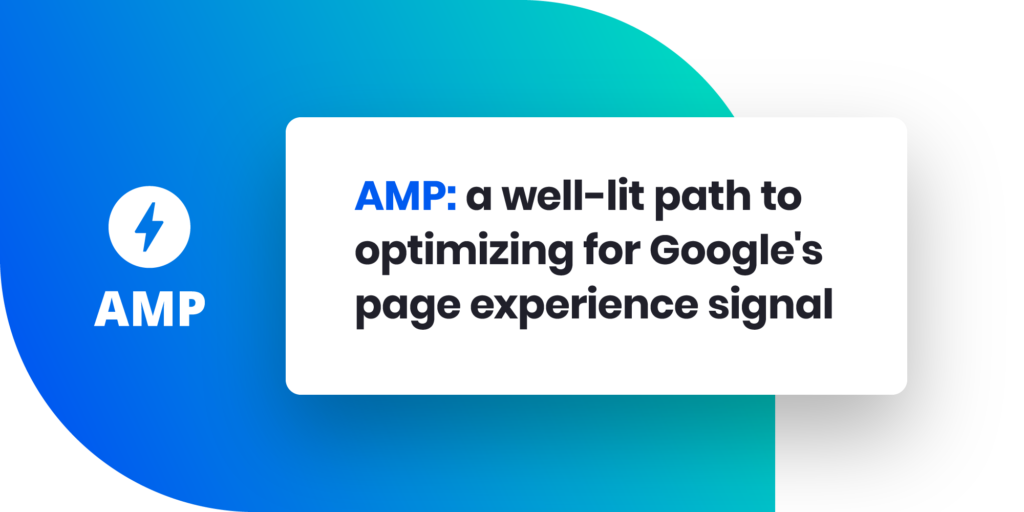
Google Search recently announced a new Search ranking signal centered around page experience. We’re excited by the potential for Google’s page experience signal to guide and empower developers to build a better web. Because AMP was developed to help enable development of user-first sites, we believe AMP is a cost-effective and simple solution for publishers to create a great page experience. In today’s post, we want to step through what the announced changes to Google Search mean for the AMP community as well as the web ecosystem.
How AMP can help you create a strong page experience
Google’s page experience signal relies on a suite of metrics collectively known as Core Web Vitals, in addition to signals such as mobile-friendliness, safe-browsing, HTTPS-security, and intrusive interstitial guidelines. This emphasis on improving user experience across the greater web aligns well with the vision and lessons learned from AMP. Google performed an analysis using the Chrome User Experience Report showing that the majority of AMP page loads will meet the Core Web Vitals, and even more still when you allow for AMP cache-delivered page loads.
Earlier this month we detailed how AMP can help site owners meet the recommended performance targets outlined by Core Web Vitals. However, there are aspects of handling performance that are out of AMP’s control, such as image-optimization and server response times, that may result in a suboptimal page experience. Make sure to check out the guidance in this blog post to optimize your AMP pages for a great page experience.
AMP Project contributors will continue working hard to ensure site owners get the strongest performance and user experience when creating AMP pages. With AMP, site owners can access these improvements without having to further invest money or engineering time. For example, recently we optimized numerous AMP components to improve measures of Cumulative Layout Shift (CLS), a Core Web Vitals metric that will contribute to the page experience signal.
Google’s continued investment in AMP
Google will continue to invest in AMP, and strongly believes in the AMP Project’s goal to make it easy to create web pages that provide a great user experience. When available, Google Search will continue to direct users to the AMP versions of web pages in the mobile Top Stories feature. This behavior keeps in place hallmarks of the AMP experience, such as privacy-preserving pre-rendering that can happen when content is served from an AMP cache. This also means that the page experience signal for a given search result will be evaluated based on the performance of the AMP page when available.
The AMP Project will continue to focus on creating strong page experiences. AMP’s always up-to-date “evergreen” release schedule means AMP users will get future performance benefits as we make them, without investing additional engineering resources.
Summary
Google’s roadmap for page experience is an exciting milestone for any web site or framework that prioritizes performance and user experience, including the AMP Project. We believe AMP makes it easy to not just create pages that are optimized for page experience, but do so with minimal on-going effort.
Please let us know if you have questions or feedback regarding these recent announcements.
In the meantime, we hope you are all staying safe.
Posted by Malte Ubl, Member of the AMP Technical Steering Committee, Principal Engineer at Google